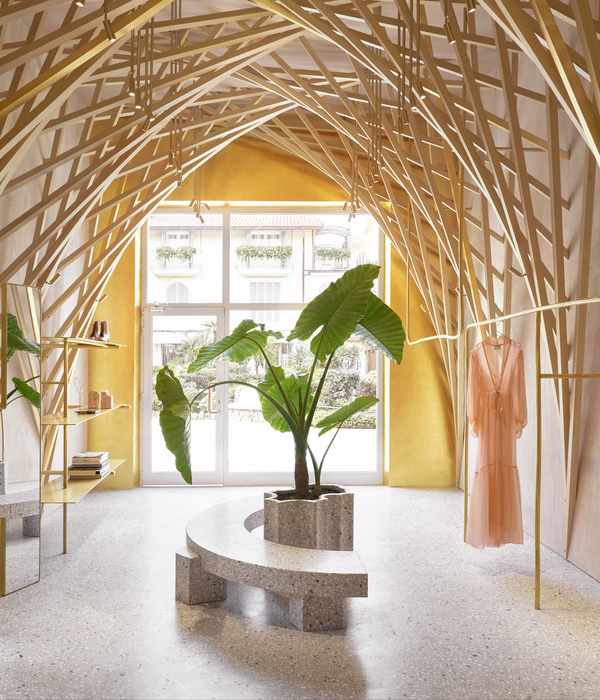Focusing on the American artist’s performative Contrapposto Studies, Bruce Nauman’s new show at Punta della Dogana, Venice, gives new meaning to body language
Bruce Nauman, Contrapposto Studies, I through VII, 2015-2016. Jointly owned by Pinault Collection and the Philadelphia Museum of Art. Installation view, ‘Bruce Nauman: Contrapposto Studies’ at Punta della Dogana, 2021. Photography: Marco Cappelletti © Palazzo Grassi © Bruce Nauman by SIAE 2021
If Europe’s museums and galleries are slowly trickling back to life post lockdown, late May in Venice was, by comparison, a deluge. As the Biennale of Architecture opened its doors for the first time since 2019, the floating city’s wealth of cultural institutions followed suit. A highlight among them came from the Pinault Collection’s Punta della Dogana, just across the Grand Canal from St Mark’s Square, which inaugurated a new show dedicated to American contemporary artist Bruce Nauman – his first major exhibition in Venice since winning the Biennale’s Golden Lion in 2009.
Bruce Nauman, Contrapposto Studies, I through VII, 2015-2016. Jointly owned by Pinault Collection and the Philadelphia Museum of Art. Installation view, ‘Bruce Nauman: Contrapposto Studies’ at Punta della Dogana, 2021. Photography: Marco Cappelletti © Palazzo Grassi © Bruce Nauman by SIAE 2021
Titled ‘Bruce Nauman: Contrapposto Studies’, the exhibition weaves its way across disparate eras of the prolific artist’s career, focusing largely on Nauman’s work with sound and performance. ‘It’s a show with nearly no objects,’ says Pinault Collection curator Caroline Bourgeois, who, alongside Carlos Basualdo, senior curator of contemporary art at the Philadelphia Museum of Art, is responsible for bringing the works to Venice. ‘It is just sound that takes you through. It is an experiment because Bruce has always done experiments.’
Though it is not strictly a retrospective, much like the artist’s major Tate Modern show in 2020, the exhibition, which runs until November 2022, circles several themes Nauman has consistently returned to in his practice: the body; sound as medium; and the studio as a creative space. Indeed, the breadth of work on show illustrates Nauman’s commitment to exploring the endless potential of a single idea. From his early video work – Bouncing in the Corner, No. 1 (1968), Slow Angle Walk (Beckett Walk) (1968) – to sound pieces like the stilted piano plonking of For Beginners (instructed piano) (2010), and Untitled performance from 1969, in which actors stand, lie or crouch motionless on the gallery floor.
Bruce Nauman, (from left to right) Stamping in the Studio, 1968; Bouncing in the Corner, No.2: Upside Down, 1969, Electronic Arts Intermix. Bouncing in the Corner, No. 1, 1968, Pinault CollectionCourtesy of the artist and Electronic Arts Intermix (EAI), New York. Installation view, ‘Bruce Nauman: Contrapposto Studies’ at Punta della Dogana, 2021. PhotographyL Marco Cappelletti © Palazzo Grassi © Bruce Nauman by SIAE 2021
As a guiding principle, all pieces brought to Punta della Dogana were chosen for their relationship to a single foundational work, Nauman’s 1968 video piece Walk with Contrapposto, in which he traverses a narrow corridor, hands clasped behind his head, jutting out his hips and posing with each step. The film is black and white, grainy and shot from above at an angle, distorting and obscuring his figure as he travels back and forth. (Contrapposto, or counterpoise, refers to the common statuary stance – think: the jaunty pose of Michelangelo’s David.) ‘I think the tension between who we think we are, how we represent ourselves and how we feel we are is really what the show is about,’ Basualdo says.
In the 2010s, Nauman revisited Walk with Contrapposto, creating a new series based on the same repetitive movements, though, this time, aided by advances in technology. His Contrapposto Studies, I through VII (2015/2016), first shown at the Philadelphia Museum of Art in 2017 and now projected larger than life onto Punta della Dogana’s walls, show the artist walking in the same straight line. In the updated version, the feed is full colour and crisp, each image split into seven sections and repeated 14 separate times, an allusion to Da Vinci’s theories of proportion.
Bruce Nauman, For Beginners (all the combinations of thumb and fingers), 2010, Collection of the Los Angeles County Museum of Art and Pinault Collection. Courtesy Sperone Westwater, New York. Installation view, ‘Bruce Nauman: Contrapposto Studies’ at Punta della Dogana, 2021. Photography: Marco Cappelletti © Palazzo Grassi © Bruce Nauman by SIAE 2021
Later in the exhibition, the exercise is recreated in 3D; viewers are invited to sit on a bench wearing the requisite glasses as Nauman walks towards them, turns on his heel, and returns. One of the more interesting aspects of the exhibition is seeing first-hand the continuity of Nauman’s ideas as his own physical conditions change: swapping a primitive camcorder for a high-definition camera; how differently his body moves with age. ‘What you will find in the exhibition is an artist who, with extraordinarily grateful simplicity, offers you an opportunity to think about your own body in the space and yourself inside your body’, adds Basualdo.
For his latest piece, Nature Morte (2020), shown for the first time at Punta della Dogana, Nauman utilised 3D-mapping technology to create a digital model of his own workspace. Visitors can pinch and scroll on an iPad, zooming into half-finished works, posters and clutter strewn on the floor. It’s a fitting finale to the show, particularly following a year in which Nauman himself was not able to travel, allowing visitors to step into his New Mexico studio all the way from the banks of Venice’s Grand Canal. §
Bruce Nauman, Nature Morte, 2020. Three 4K video projections and three servers controlled by three iPad Pro 11’’, 3D scans of studio. Courtesy of the artist and Sperone Westwater, New York. © Bruce Nauman by SIAE 2021, courtesy Sperone Westwater, New York
{{item.text_origin}}












